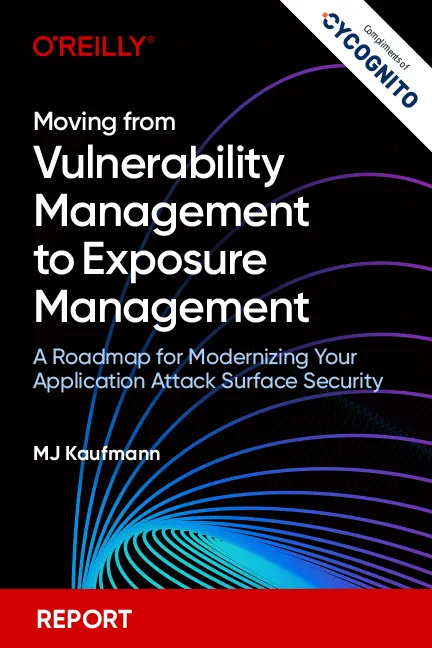Key Security Control Frameworks and Standards
Voluntary Standards
1. NIST Cybersecurity Framework
The NIST Cybersecurity Framework provides a structured approach to managing cybersecurity risks. It includes guidelines and best practices focusing on identifying, protecting, detecting, responding to, and recovering from cyber threats. This framework helps organizations of all sizes improve their cybersecurity defenses and manage risk more effectively.
The framework's flexible structure allows organizations to align cybersecurity efforts with business objectives, ensuring that resources are used efficiently. By offering an adaptable security model, the NIST framework supports continuous improvement, guiding organizations in implementing effective and up-to-date security measures.
2. ISO/IEC 27001
ISO/IEC 27001 is an international standard providing requirements for an information security management system (ISMS). It outlines security best practices for managing information security. Organizations can achieve certification to demonstrate their commitment to data protection and compliance with recognized security standards.
The standard emphasizes continuous improvement, risk assessment, and the establishment of appropriate controls to safeguard information. ISO/IEC 27001 supports a structured approach to managing sensitive data, ensuring that security measures evolve with changing threats.
3. CIS (Center for Internet Security) Critical Security Controls
CIS Critical Security Controls are a set of recommended actions for cyber defense. These controls guide organizations in implementing security strategies that mitigate known cyber threats. Developed by cybersecurity experts, they focus on best practices that deliver protection against evolving threats.
Implementing these controls helps organizations prioritize actions that have the greatest impact on improving cyber defenses. By following the CIS framework, organizations can enhance their security posture and ensure consistent application of controls.
4. COBIT (Control Objectives for Information and Related Technologies)
COBIT is a framework developed by ISACA to guide organizations in the governance and management of enterprise IT. It provides a structured approach to aligning IT strategy with business objectives, focusing on areas such as risk management, information security, and compliance. By following COBIT, organizations can establish controls that support both the effectiveness and efficiency of IT operations.
COBIT’s framework defines specific control objectives across five domains: governance, planning, acquisition, delivery, and monitoring. Each objective includes best practices and guidelines for setting up security controls that protect information and ensure regulatory compliance. By integrating COBIT, organizations can improve accountability, enhance risk management, and optimize resource use.
5. SOC 2 (System and Organization Controls)
SOC 2 is a framework developed by the American Institute of CPAs (AICPA) to ensure effective management of data security, availability, processing integrity, confidentiality, and privacy in service organizations. It is particularly relevant for businesses that handle sensitive customer data, providing a standard for assessing and reporting on the effectiveness of internal controls.
The SOC 2 framework includes a set of trust service criteria that guide the implementation of security practices around data protection. Organizations can undergo a SOC 2 audit to validate compliance, which can demonstrate their commitment to data security to clients and stakeholders. SOC 2 reports are often used to assure customers that security practices meet industry standards.
Mandatory Government and Industry Standards
6. NIS 2
The NIS 2 Directive, adopted by the European Union, aims to enhance cybersecurity across key sectors within member states by setting stronger cybersecurity requirements and standardizing security practices. This directive extends the scope of the original NIS Directive to include a broader range of industries, including healthcare, financial services, and digital infrastructure providers.
NIS 2 focuses on improving the resilience of critical infrastructure against cyber threats through robust risk management, reporting obligations, and incident response strategies. It emphasizes cooperation between member states and mandates that organizations implement both technical and organizational controls to mitigate cyber risks. By aligning with NIS 2, organizations within the EU can improve their ability to detect, prevent, and respond to cyber threats, fostering a more secure digital ecosystem across member nations.
7. DORA (Digital Operational Resilience Act)
DORA is a regulation developed by the European Union that focuses specifically on the financial sector's resilience to cyber threats and operational risks. DORA mandates that financial institutions, including banks, investment firms, and payment service providers, establish comprehensive strategies to ensure operational resilience against ICT (Information and Communications Technology) risks.
Under DORA, financial entities are required to conduct risk assessments, implement controls for risk mitigation, and establish incident reporting mechanisms. The regulation also emphasizes the need for testing digital resilience through regular simulations and audits. DORA’s provisions aim to protect the stability of the financial sector by ensuring that organizations can continue operations even in the face of severe cyber incidents. Compliance with DORA helps financial entities strengthen their defenses, minimize downtime, and maintain customer trust in the event of a cyber disruption.
8. PCI-DSS (Payment Card Industry Data Security Standard)
PCI-DSS is a security standard created to protect cardholder data and reduce credit card fraud risks for organizations handling card transactions. The standard outlines specific technical and operational requirements, such as implementing firewalls, encryption, and access controls, that ensure secure payment processing environments. Organizations are required to comply with PCI-DSS to safeguard customer data and avoid penalties from non-compliance.
PCI-DSS is structured around twelve main requirements, divided into six control objectives, which focus on securing cardholder data, maintaining a secure network, and regularly monitoring security measures. Compliance with PCI-DSS helps organizations minimize vulnerabilities in their payment systems, ensuring that customer payment information is protected from unauthorized access and breaches.
Related content: Read our guide to Continuous Threat Exposure Management (CTEM)
Best Practices for Effective Security Controls
Regular Updates and Patch Management
Regular updates and patch management are essential for maintaining effective security controls. This practice involves timely application of software patches and updates to fix vulnerabilities, ensuring systems remain protected against exploits. Regular updates prevent attackers from leveraging known weaknesses in outdated software.
By systematically managing patches, organizations can reduce the risk of exploitation and ensure compliance with security standards. Effective patch management involves prioritizing critical updates, testing patches to ensure compatibility, and scheduling deployments to minimize downtime.
Automate Security Policies to Avoid Configuration Drift
Automating security policies helps organizations maintain consistent security configurations across systems, minimizing the risk of configuration drift—a scenario where systems deviate from their secure baseline configurations over time. This drift can lead to vulnerabilities that expose systems to unauthorized access or exploitation.
Automation tools, such as configuration management systems and security policy enforcement solutions, can apply standardized configurations across devices and environments. Automated policy checks help detect deviations promptly, ensuring that configurations align with security standards. By automating policy enforcement, organizations reduce the likelihood of human error, ensure policy consistency, and improve the efficiency of their security management practices.
Employee Training and Awareness Programs
Employee training and awareness programs are crucial in cultivating a security-conscious culture. Regular training ensures that employees understand the latest phishing techniques, social engineering tactics, and security policies. This knowledge empowers them to act as the first line of defense against cyber threats.
These programs emphasize the importance of adhering to security practices, such as password management and recognizing suspicious activities. By fostering a sense of responsibility and encouraging active participation, organizations can reduce human error and significantly strengthen their overall security posture.
Strong Access Control Policies
Strong access control policies are vital in ensuring that only authorized individuals have access to sensitive information. This involves implementing stringent authentication measures, assigning proper access privileges, and regularly reviewing access permissions to prevent unauthorized data exposure.
Access control policies should be integrated into security frameworks, guiding user permissions, and ensuring compliance with data protection standards. By enforcing the principle of least privilege, organizations can limit access to essential personnel, minimizing potential avenues for unauthorized access and breaches.
Incident Response Planning
Incident response planning prepares organizations to effectively manage and mitigate security incidents. A comprehensive incident response plan outlines procedures for identifying, assessing, and responding to cyber threats. Quick, coordinated responses can limit damage and restore normal operations, minimizing the impact of incidents.
Regular drills and updates to the incident response plan ensure preparedness and adaptability to new threats. A robust plan fosters readiness, enabling organizations to manage security breaches swiftly and effectively.
Continuous Monitoring and Improvement
Continuous monitoring and improvement are essential for maintaining robust security postures. This involves persistent surveillance of systems and networks to detect and respond to security events promptly. Regular analysis of security controls supports the identification of areas for enhancement, ensuring measures remain effective against emerging threats.
By adopting a proactive approach, organizations can preemptively address vulnerabilities, adapt security strategies, and ensure compliance with evolving standards. Continuous improvement fosters resilience, enabling organizations to stay ahead of adversaries and effectively protect their information assets over the long term.
Leveraging Attack Surface Management
Attack Surface Management (ASM) involves continuously identifying, monitoring, and reducing the potential points of exposure where an attacker could gain unauthorized access to an organization’s systems. By mapping out all internet-facing assets, including servers, APIs, and cloud services, ASM helps organizations understand their full attack surface. This process includes assessing known and unknown assets, monitoring for changes, and prioritizing remediation based on risk.
Incorporating ASM into a security strategy allows for proactive risk management. By continuously scanning for vulnerabilities, misconfigurations, and exposed services, organizations can swiftly identify and address weaknesses before they are exploited. Regular reviews of the attack surface help ensure new assets are detected and secured, aligning security efforts with dynamic changes in the IT environment. This ongoing visibility into the attack surface is essential for minimizing risk, enhancing security controls, and maintaining compliance with industry standards.
Supporting Security Controls with CyCognito
Passing an audit is a challenge from start to finish. Day-to-day activities are often put on the back burner, and stress levels rise as your teams scramble to gather information in preparation.
CyCognito maps discovered issues with top security frameworks and compliance standards, providing specific guidance for each violation as it relates to your objective. Automated evidence collection and continuous monitoring enable you to get ready for audit or prove attestation in minimal time. The result: faster audit times and lower stress levels for your teams.
Early warning of violations
Organizations often learn of compliance issues during an audit, making it a challenge to respond effectively. Integrating CyCognito within your asset inventory and security testing workflow enables an early response and higher confidence.
- Understand your compliance state at a glance
- Reduce “unknown unknowns” that bottleneck an audit
- Gain actionable insights to simplify remediation
Accurate prioritization guidance
You want your IT security teams aware of the most important issues that impact an audit. CyCognito provides your GRC teams with a continuously updated list of top issues and remediation steps to ensure issues can be resolved promptly.
- Remove tedious, error-prone efforts to understand your compliance posture and rank priorities
- Reduce reaction time with continuous evidence collection for all issues
- Track progress in the months/weeks leading up to an audit
Clear path to violations
Manual investigation and validation slow remediation efforts. CyCognito’s dynamic list of all issues is prioritized based on business risk. Remediation instructions are included to simplify the workflow.
- Eliminate manual investigation to understand asset ownership
- Schedule accurately with remediation effort provided for each issue
- Connect business risk and issue severity to prioritize accurately
CyCognito takes a standards approach that can be leveraged across hundreds of privacy and other regulations, for example, NIS 2 and HIPAA.
- PCI-DSS v4 – The US standard for organizations that store, process or transmit payment account data.
- NIST 800-53 R5 – Required for federal government systems, SP 800-53 is typically the first path on the road to FISMA certification.
- NIST 800-171 R2 – Organizations planning to do business with the federal government must adhere to NIST 800-171.
- CIS v8 – Guidance to mitigate the most prevalent cyber-attacks.
- ISO27001:2022 – The international standard for information security, covering a broad range of security controls.
- ISO27002:2022 – Best-practice guidance on selecting and implementing the security controls listed in ISO 27001.
Learn more about how CyCognito supports security controls and compliance.







 Complimentary Report
Complimentary Report